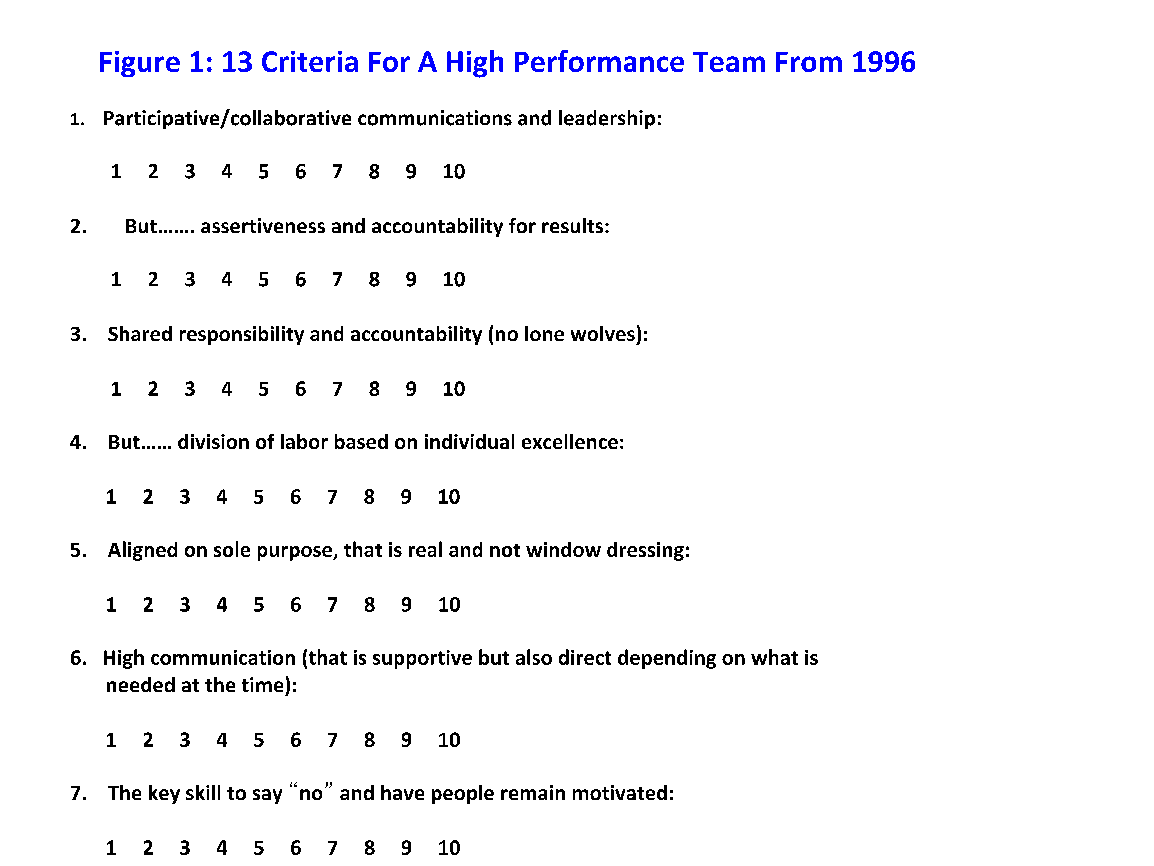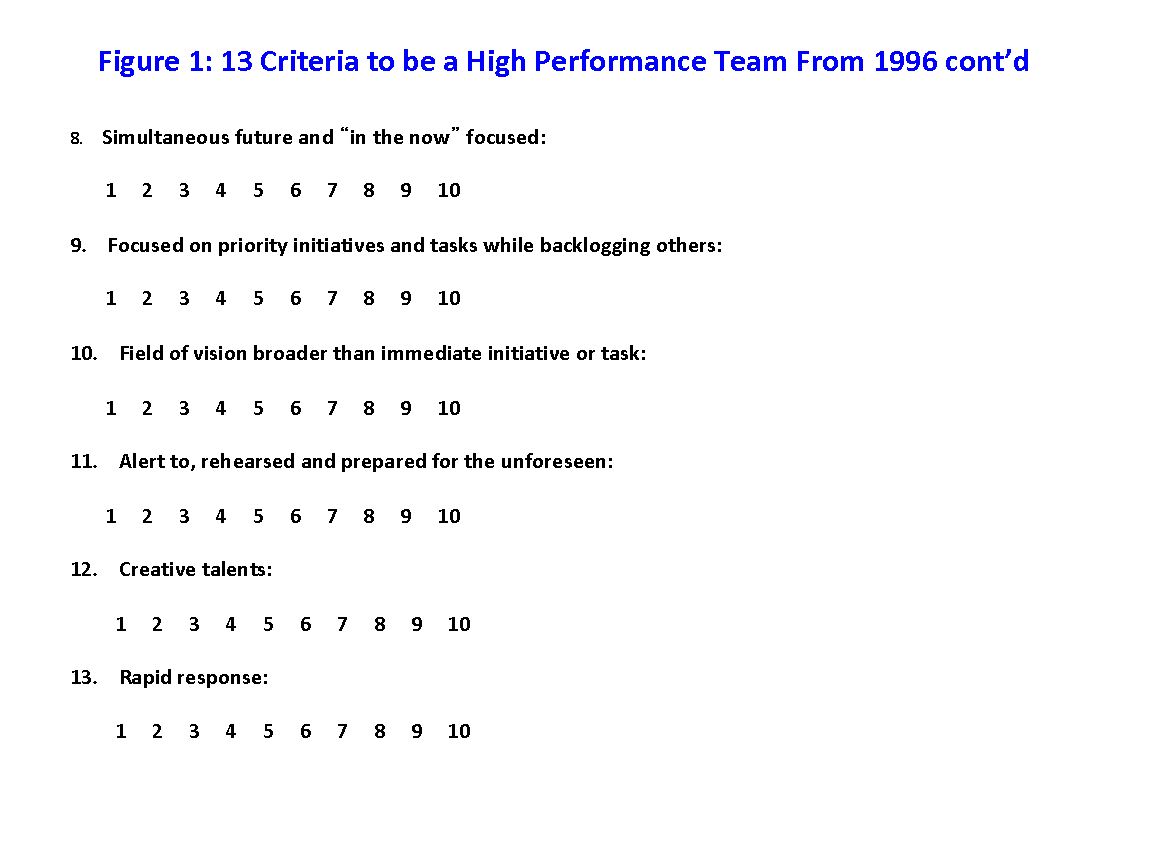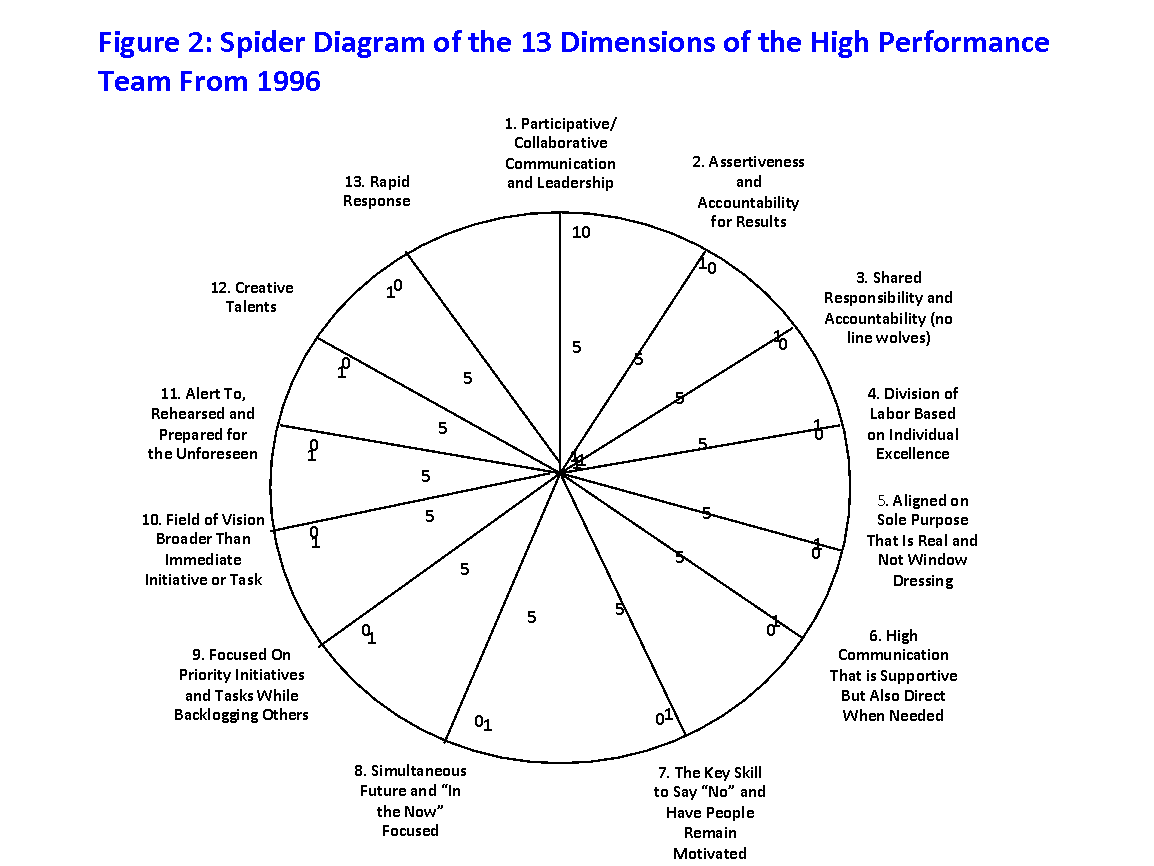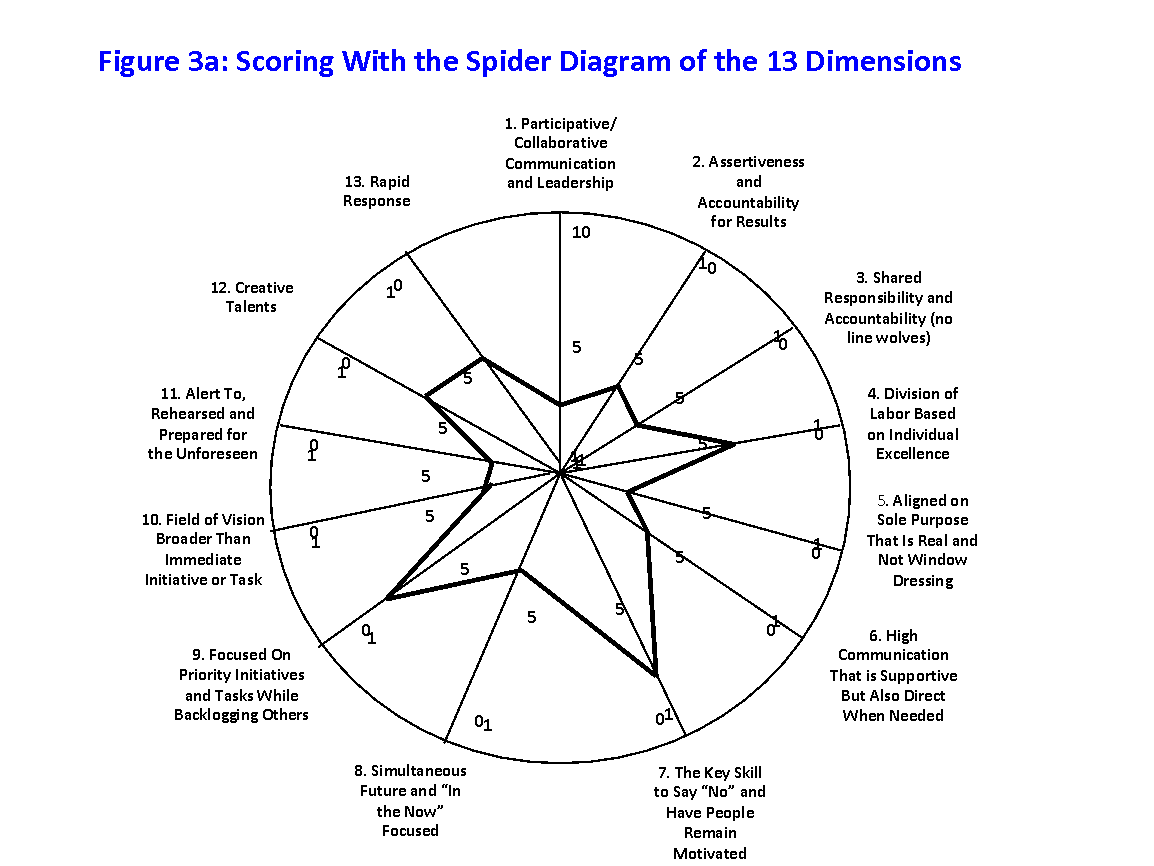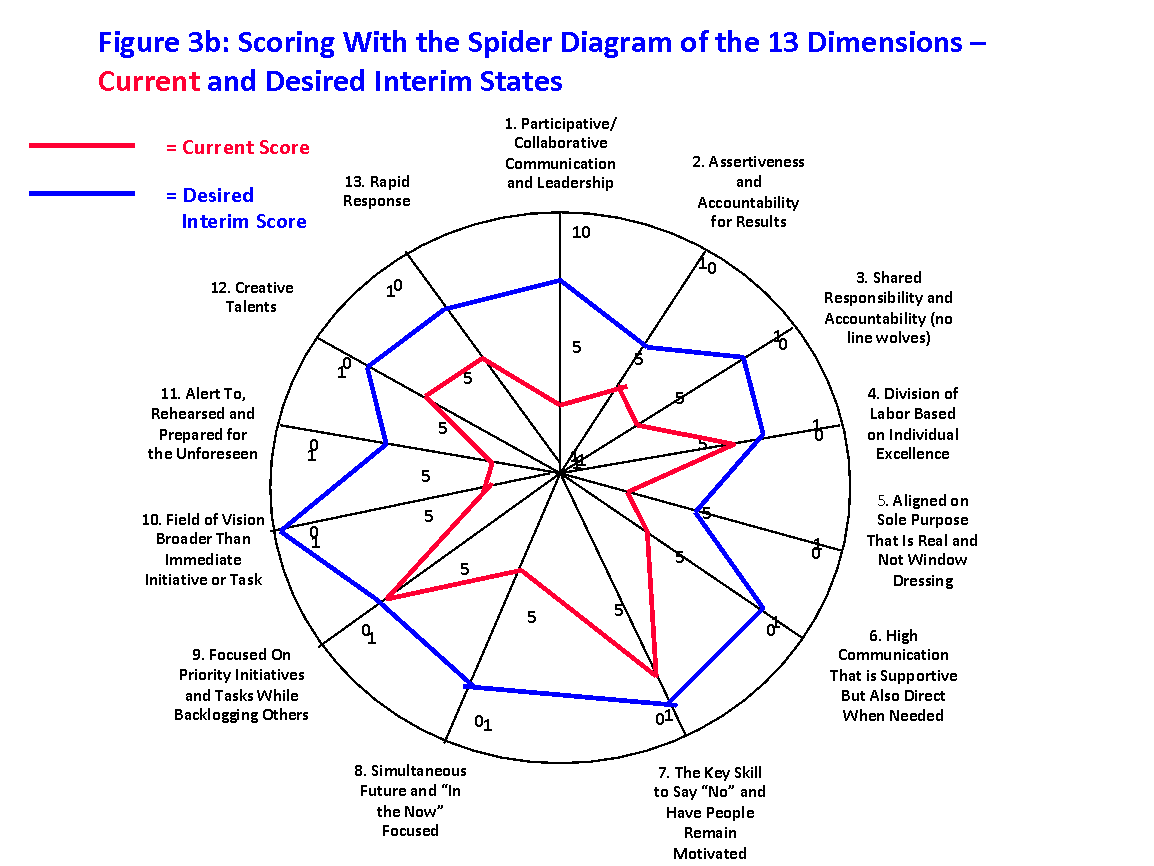 This article will discuss a straightforward proposition: Do we want or need High Performance Teams (HPT) in our VUCA 2021 world? More directly for this article, do Top Management Teams (TMTs) need to be HPTs for long-term value creation and growth? When we view the TMT as a proposed HPT, would we rather want or need them to be the good or useful version of a group of distributed and unconnected powerful “feudal barons and baronesses”. I know this seems ludicrous because teams, and the special version of a team called a HPT, seem to have knee jerk and near universal support that they are a “good” no matter what. But more on this notion of feudal barons and baronesses below.
This article will discuss a straightforward proposition: Do we want or need High Performance Teams (HPT) in our VUCA 2021 world? More directly for this article, do Top Management Teams (TMTs) need to be HPTs for long-term value creation and growth? When we view the TMT as a proposed HPT, would we rather want or need them to be the good or useful version of a group of distributed and unconnected powerful “feudal barons and baronesses”. I know this seems ludicrous because teams, and the special version of a team called a HPT, seem to have knee jerk and near universal support that they are a “good” no matter what. But more on this notion of feudal barons and baronesses below.
Around 1998 the topic of High Performance Teams was a very popular one. Books and articles were being written and some consulting was being engaged. I applied this thinking to the Top Management Team (TMT), as did a few others. The TMT in a for-profit firm is the CEO and her or his direct reports. I got very interested in this topic and studied the following teams to gain possible insights into the HPT: a hospital emergency room team, a racecar pit crew team, and an improvisational jazz quartet team. Their success seemed to conform to the 13 Dimensions of a HPT discussed below. Thus the notion had “face validity” back then. Other non-business team we could study for insights could be a Navy SEAL team, the Blue Angels jet aircraft team and sports teams who have been dynasties or who have pulled off miracles. The U.S. 1980 Olympic hockey team comes to mind. You can think of others.
In the ensuing period since 1998 to 2021 the topic seems to have become of less interest, at least for the TMT as a unit. Why is this? Do we not need high performance in the TMT anymore? Would just normal performance suffice? After all in a VUCA (volatile, uncertain, complex and ambiguous) world, we may need for the TMT to be splintered and unconnected to match the un-connectedness in the external environment. A tight high performance team could lead to groupthink and be plagued by other biases. A loosely coupled group of individuals who unite throughout the year for some semblance of cohesion and alignment might be all that we need.
I will ponder these questions in this article. Let me give a spoiler: I think the TMT, as a HPT is needed now as it was in 1998 to be a catalyst for value and wealth creation. Also I think many TMTs today are not HPTs. I will try to build my case in this article.
Background
Around 1994 I attended a Wilson Learning Corporation two-day course on High Performance Teams. It was a very informative two days. I adapted their framework by 1996 to include thirteen Dimensions of a HPT around which teams could be graded. Figure 1 shows those Dimensions at that time:
Since there are a lot of Dimensions here, portraying them in a spider diagram is useful, as shown in Figure 2:
A score of 1 means none of that Dimension is found in the team and a 10 means that the team scores at the utmost of that Dimension. I think the definitions of each Dimension are pretty straightforward, even though some are a little abstract. Respondents would anonymously self-score based on first impressions after discussing what each Dimension meant for that business. I would then corroborate with anonymous assessments from their direct reports. While the statistician would find fault with my method, this simple and ad hoc procedure worked pretty well in getting a baseline measure of the team. What would your team or your firm’s TMT score on these Dimensions?
For illustrative purposes we can use the Spider Diagram to portray current team scores with desired team scores as shown in Figures 3a and 3b:
From these assessments we can categorize levels of overall HPT effectiveness:
- True High Performance Team – the team scores 8,9 or 10 on each Dimension
- “Solid Citizen Team” – the team scores 5,6 or 7 on each Dimension
- “Run of the Mill” Team – the team scores 3 or 4 on each Dimension
- Dysfunctional Team – the team scores 1 or 2 on each Dimension
In my 36 years of doing strategy consulting work or as an intermittent professor of strategy studying this, I have only encountered two truly Dysfunctional TMTs. Attributes of Dysfunctional Teams include infighting, backstabbing, and power struggles resulting in excessive fatigue. This zaps the ability to make good and timely decisions that are in the best interest of the firm, and these were not fun environments in which to work. Most of the TMTs in my work were at least “Solid Citizen” Teams, but there were also my share of “Run of the Mill” TMTs. This made working for and with them challenging to formulate competitive strategy that would lead to financial value and wealth creation.
Critical questions are:
- Do we need HPTs in 2021?
- Do any or all of these 13 Dimensions adequately describe a HPT is 2021.
- And finally, should the TMT be a HPT to lead for long-term value creation or other measures of firm performance that you think are important?
- Do we need HPTs in 2021?
I think we do. The ante for high performance in 2021 has been upped tremendously in the last ten years. Solid Citizen and Run of the Mill teams find it hard to stay ahead in today’s VUCA world. And Dysfunctional Teams have no chance for performance, much less high performance. As I mentioned above from systems theory, we might posit that teams need to be unconnected and de-coupled to match the un-connectedness and fragmentation in the external environment. But teams need to be able to reason together quickly and make fast and useful decisions. They simply cannot do this if they are a “loose confederation of powerful barons and baronesses”. We may have to view improvement from a Dysfunctional Team to a Run of the Mill Team and then to a Solid Citizen Team as all that is possible. But in today’s world, in my view, it is High Performance or nothing. To achieve this, we might have to simply replace the team with members who can’t with those who can exhibit the attributes of a HPT. If you will grant this premise, we can move to Question #2.
- Do any or all of these 13 Dimensions adequately describe a HPT is 2021.
I have thought hard about the 13 Dimensions presented above over the last five years. I think the thirteen 1996 Dimensions are still useful, although two or three might be able to be collapsed. The following are Dimensions I think could be added as I do not think they cannot be included within the thirteen 1996 Dimensions:
- The ability to handle high levels of ambiguity and uncertainty.
- The ability to persevere with high levels of stamina and mental stability amidst breakneck speed and uncertainty.
- The ability to forego political infighting, power games, backstabbing and general acrimony.
- The knowledge and ability to apply value creation principles. We used to think that value creation principles adhered only to the TMT. However in my view, as well as others, the knowledge of value creation principles and how to apply them needs to be found at all levels in the firm. Of course, this knowledge and application skill needs to be appropriate for the level of executives and managers, but they need to be resident throughout the firm. For example, Whole Foods and other firms distributed Economic Value Analysis (EVA which is one method of value creation) to their store managers and even to store employees. It is true that Whole Foods later abandoned the EVA approach, but they still felt the focus on value creation to be very important for Whole Foods performance.
What would you suggest needs to be dropped and/or added for 2021?
- Should the TMT be a HPT to lead for long-term value creation
I think it should. By TMT I mean the corporate level TMT and each of the business unit TMTs. Managing and leading for long-term value creation means making decisions today that will make continuous trade-off decisions among growth, cash margins and asset intensity over the short to mid-term. This means in many cases foregoing short-term accounting profits for long run advantaged economic profit performance. Authors like Al Rappaport, Bennett Stewart, Bart Madden, Holland and Mathews and Greg Milano (among others) agree in my view from reading their writings. (see references below at the end of this article).
I return to the point I made above. I think the TMT needs to be a HPT or sub-optimal value creation and growth will ensue. Run-of-the Mill and even Solid Citizen teams will not and cannot get the job done. If a TMT is currently one of these two kinds of teams, they can be given the mandate to transform to a HPT quickly. If they cannot, they should be switched out. And a Dysfunctional Team needs to be replaced immediately.
I know some will think I am being draconian and I hope to be challenged on my thinking, but I have witnessed too many performance shortfalls caused by team dynamics over the years. The mandate for value creation and growth in 2021 demands high performance, and only HPTs can accomplish this in my view.
References
- David Holland and Bryant Matthews, Beyond Earnings: Applying the Holt CFROI and Economic Profit Framework, Wiley, 2018, 383 pages.
- Bartley J. Madden, Value Creation Principles, Wiley, 2020, 250 pages.
- Bartley J. Madden, Maximizing Shareholder Value and The Greater Good, LearningWhatWorks, 2005, 54 pages.
- Greg V. Milano, Curing Corporate Short-Termism: Future Growth vs. Current Earnings, Fortuna Advisors, 2020, 351 pages.
- Rappaport, Alfred, Creating Shareholder Value: The New Standard for Business Performance, Free Press, 1986, 270 pages. Revised edition 1998, Free Press, 205 pages.
- Bennett Stewart, The Quest for Value, HarperBusiness, 1991, 800 pages
This article is part of a series on what causes a firm’s value to increase.
Dr. William Bigler is the founder and CEO of Bill Bigler Associates, an independent strategy and financial value and wealth research endeavor. He is a former Associate Professor of Strategy and the former MBA Program Director at Louisiana State University at Shreveport. He was the President of the Board of the Association for Strategic Planning in 2012 and served on the Board of Advisors for Nitro Security Inc. from 2003-2005. He is the author of the 2004 book “The New Science of Strategy Execution: How Established Firms Become Fast, Sleek Wealth Creators”. He has worked in the strategy departments of PricewaterhouseCoopers, the Hay Group, Ernst & Young and the Thomas Group among several others. He can be reached at bill@billbigler.com or www.billbigler.com.

